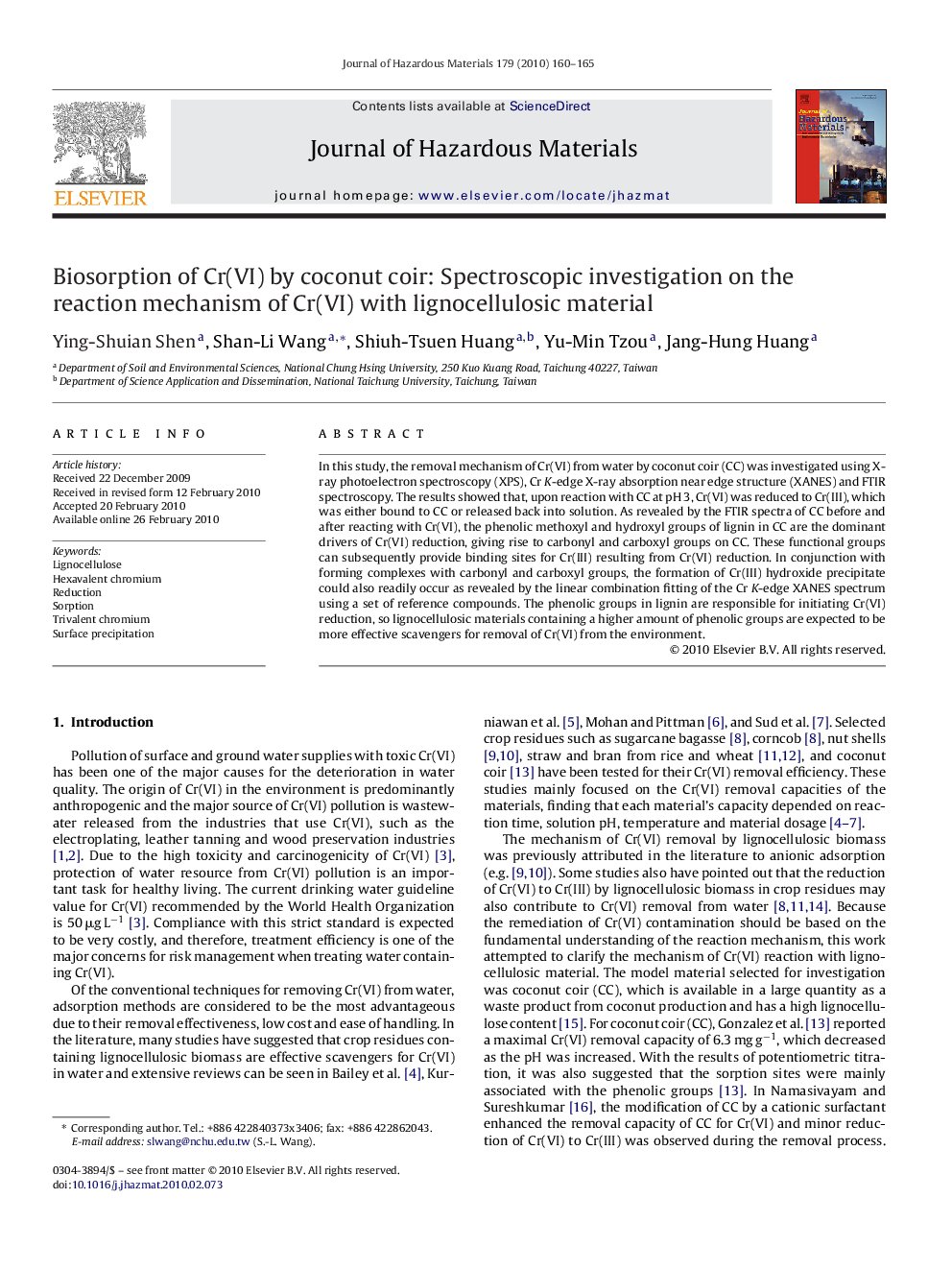| Article ID | Journal | Published Year | Pages | File Type |
|---|---|---|---|---|
| 580348 | Journal of Hazardous Materials | 2010 | 6 Pages |
Abstract
In this study, the removal mechanism of Cr(VI) from water by coconut coir (CC) was investigated using X-ray photoelectron spectroscopy (XPS), Cr K-edge X-ray absorption near edge structure (XANES) and FTIR spectroscopy. The results showed that, upon reaction with CC at pH 3, Cr(VI) was reduced to Cr(III), which was either bound to CC or released back into solution. As revealed by the FTIR spectra of CC before and after reacting with Cr(VI), the phenolic methoxyl and hydroxyl groups of lignin in CC are the dominant drivers of Cr(VI) reduction, giving rise to carbonyl and carboxyl groups on CC. These functional groups can subsequently provide binding sites for Cr(III) resulting from Cr(VI) reduction. In conjunction with forming complexes with carbonyl and carboxyl groups, the formation of Cr(III) hydroxide precipitate could also readily occur as revealed by the linear combination fitting of the Cr K-edge XANES spectrum using a set of reference compounds. The phenolic groups in lignin are responsible for initiating Cr(VI) reduction, so lignocellulosic materials containing a higher amount of phenolic groups are expected to be more effective scavengers for removal of Cr(VI) from the environment.
Related Topics
Physical Sciences and Engineering
Chemical Engineering
Chemical Health and Safety
Authors
Ying-Shuian Shen, Shan-Li Wang, Shiuh-Tsuen Huang, Yu-Min Tzou, Jang-Hung Huang,
